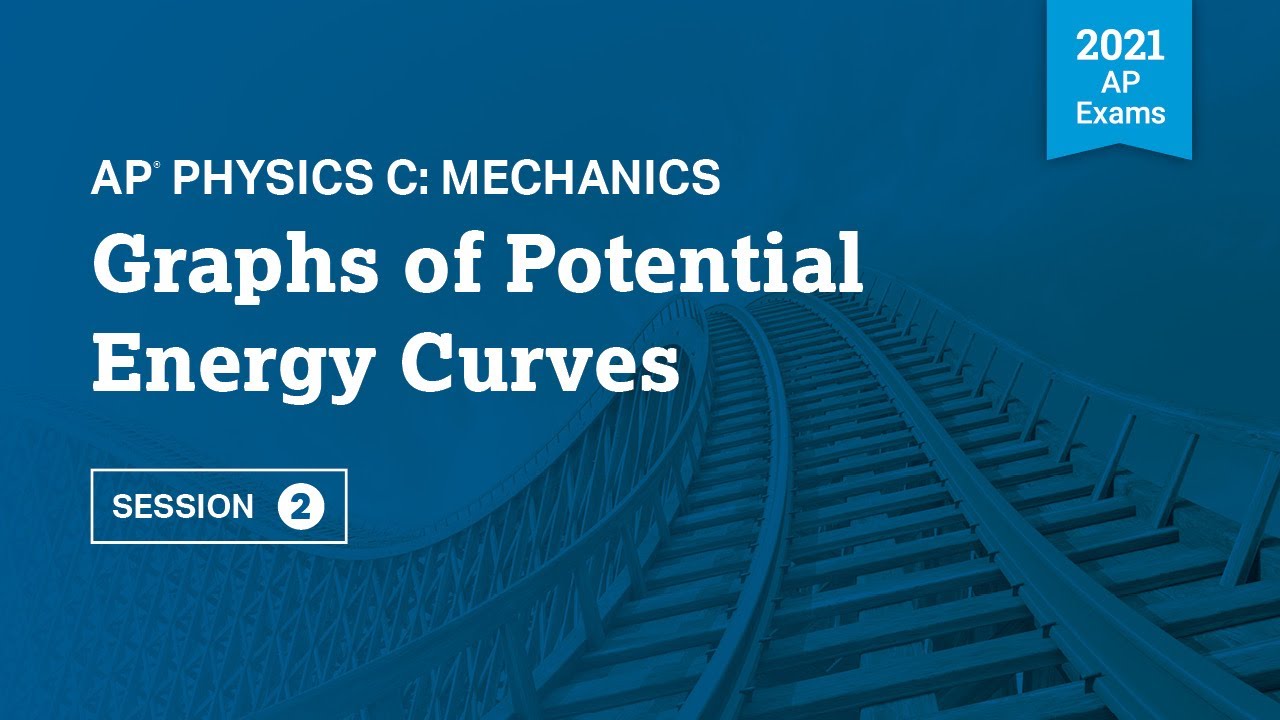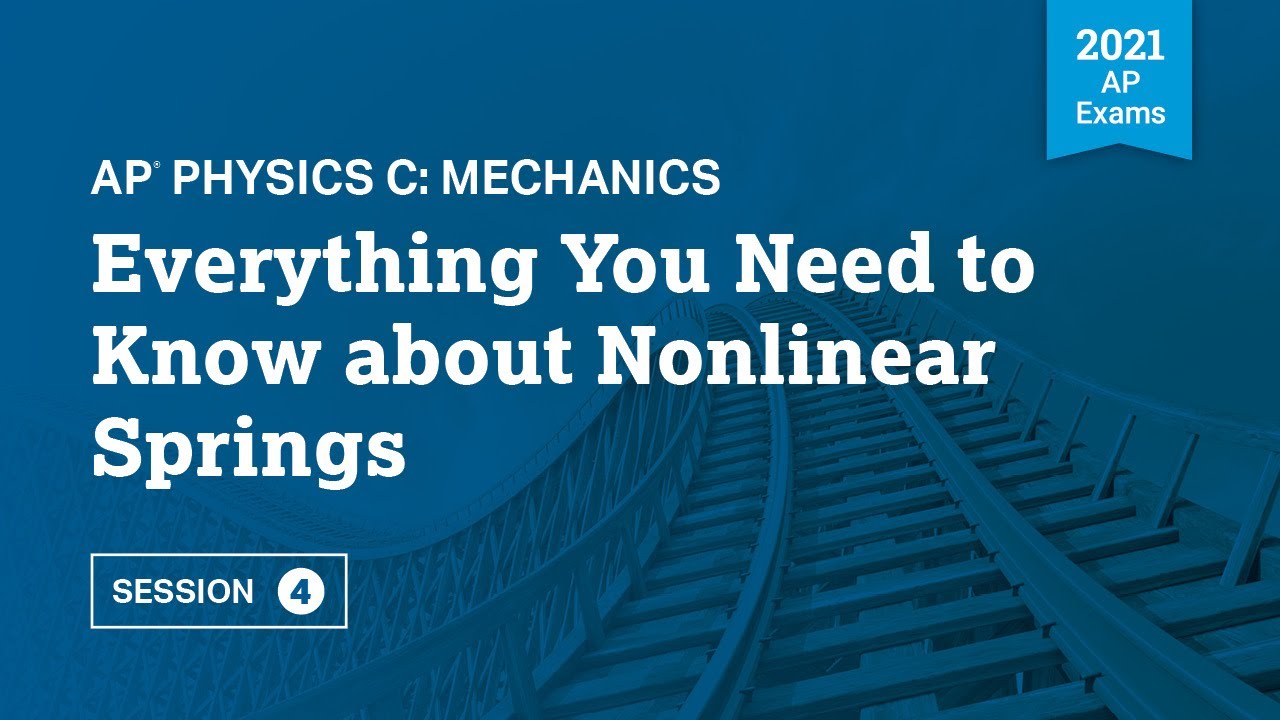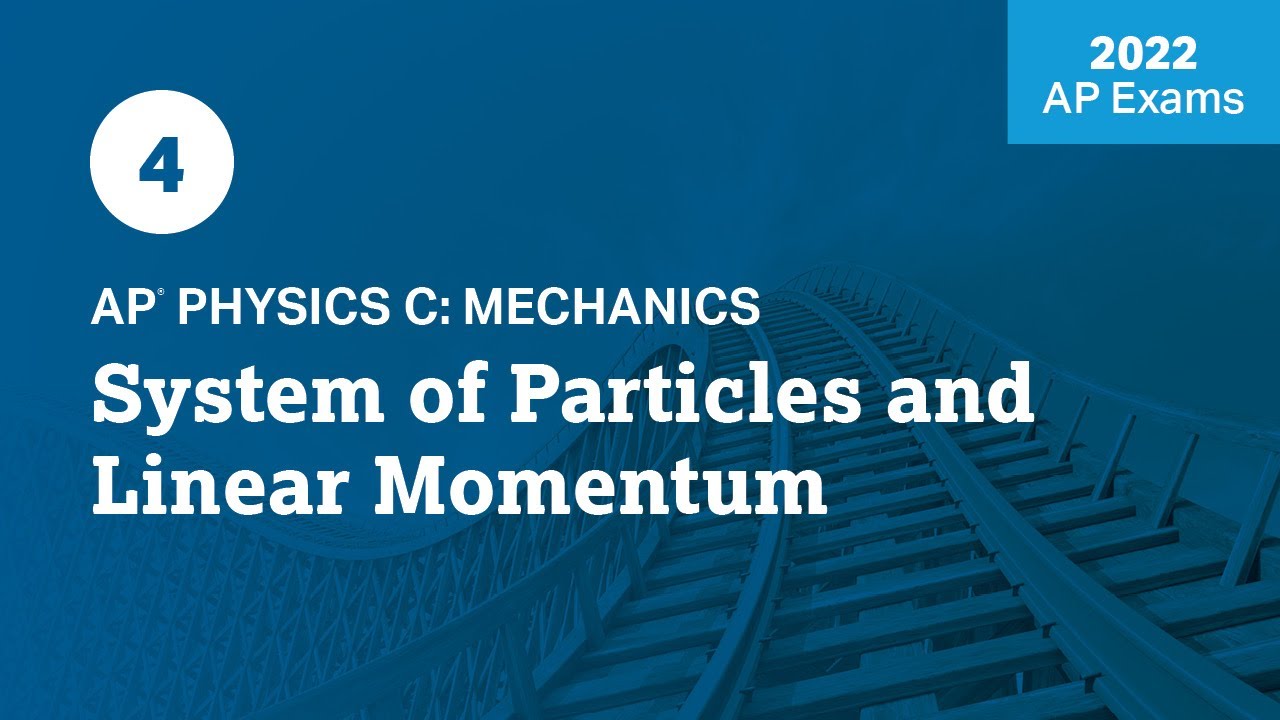2021 Live Review 8 | AP Physics C: Mechanics | Understanding Resistive Forces
TLDRThis AP Physics C Mechanics live review session focuses on the impact of resistive forces on the motion of objects, particularly air resistance in free-fall scenarios. The instructor guides students through the process of drawing free body diagrams, formulating differential equations based on Newton's second law, and solving for terminal velocity. The session also covers graphical representations of speed, acceleration, and displacement, and includes practice problems from past exams to reinforce the concepts. The instructor emphasizes the importance of understanding these concepts for the AP exam and encourages students to practice with available resources.
Takeaways
- 📚 The session is part of the 'AP Daily Live Review' for AP Physics C Mechanics, focusing on the impact of resistive forces on the motion of objects.
- 🔍 The instructor emphasizes the importance of drawing free body diagrams to express Newton's second law as a differential equation, which is key to solving problems involving resistive forces.
- 📉 The session reviews how to handle problems where air resistance is not negligible, explaining that objects in free fall reach a terminal velocity due to air resistance.
- 📈 The instructor demonstrates how to derive and solve differential equations to find terminal velocity and the behavior of objects under resistive forces.
- 📝 The session provides a step-by-step guide on integrating differential equations to find the velocity of an object as a function of time, including dealing with integration constants.
- 📊 The importance of graphing the velocity, acceleration, and displacement of an object over time is highlighted to visualize the effects of resistive forces.
- 🔧 The session includes practical examples, such as a coffee filter in a gravitational field, to illustrate non-linear terminal velocity behavior due to different mass.
- 📑 The instructor provides resources, including free response questions and scoring rubrics from AP Central, for additional practice and understanding of how to approach problem-solving.
- 💻 The session is recorded and made available on the AP Classroom and the College Board's AP YouTube channel for later viewing and review.
- 🗳️ Feedback from viewers is encouraged to improve the content and delivery of future 'AP Daily Live Review' sessions.
- 🎓 The final session wraps up with a reminder of the importance of understanding the fundamental concepts of physics to tackle complex problems effectively.
Q & A
Why might one be glad when a physics problem states 'ignore air resistance' or 'air resistance is negligible'?
-One might be glad because these assumptions simplify the problem, making it easier to solve without considering the complex effects of air resistance on the motion of an object.
What is terminal velocity and why does it occur?
-Terminal velocity is the maximum speed that a freely falling object eventually reaches when the resistance of the medium through which it is falling prevents further acceleration of the object.
What is the purpose of drawing a free body diagram in physics problems involving resistive forces?
-A free body diagram helps visualize all the forces acting on an object, allowing one to apply Newton's laws accurately and set up the correct differential equations to solve for motion under the influence of resistive forces.
How does air resistance affect the differential equation representing the motion of a falling object?
-Air resistance is typically modeled as a force proportional to the velocity of the object. This force is included in the differential equation as a term that opposes the gravitational force, affecting the acceleration and ultimately the velocity of the object.
What is the significance of solving the differential equation for velocity in problems with resistive forces?
-Solving the differential equation for velocity allows one to determine how the speed of an object changes over time, including finding the terminal velocity and understanding the motion's behavior under the influence of resistive forces.
Why is it important to consider the initial conditions when solving physics problems with differential equations?
-Initial conditions, such as the object's initial velocity or position, are crucial for correctly applying the limits of integration when solving differential equations. They ensure the solution corresponds to the specific physical scenario being modeled.
How does the terminal velocity of an object change with the mass of the object?
-The terminal velocity is generally proportional to the gravitational force acting on the object and inversely proportional to the resistive force coefficient. As mass increases, if the resistive force is proportional to velocity and not area or shape, the terminal velocity may increase due to the larger gravitational force.
What is the relationship between the resistive force and the velocity of an object in the problems discussed in the script?
-In the script, the resistive force is directly proportional to the velocity of the object, which means as the velocity increases, the resistive force also increases, affecting the object's acceleration and terminal velocity.
Why is it necessary to sketch graphs of velocity, acceleration, and displacement when solving resistive force problems?
-Graphs provide a visual representation of the behavior of the object over time, showing how velocity, acceleration, and displacement change due to resistive forces. They help in understanding the dynamics of the motion and can be used to interpret the results of the differential equations.
What is the role of the normal force in the context of the problems discussed in the script?
-The normal force is perpendicular to the surface and balances the component of the gravitational force acting in the same direction. While it does not directly affect the horizontal motion in the problems discussed, it is still important to acknowledge its presence in the free body diagram for completeness.
How can one find the distance an object will travel when subjected to a resistive force that causes it to come to rest?
-By integrating the velocity function with respect to time, one can find the displacement of the object. The integration will give the area under the velocity-time graph, which represents the total distance traveled before the object comes to rest.
Outlines
📚 Introduction to AP Physics Mechanics Review
The script opens with a discussion on the importance of considering air resistance in physics problems, using the example of terminal velocity when skydiving. It introduces the session as part of the AP Daily Live Review for AP Physics C Mechanics, highlighting that it's the last session. The logistics are reviewed, mentioning that the session is recorded and will be available on the AP Classroom and College Board's AP YouTube channel. The presenter encourages subscribing for review materials and provides a URL for additional resources and feedback. The main focus of the session is to explore resistive forces, learn to express and solve differential equations based on free body diagrams, and understand the functional and graphical representations of speed, acceleration, and position under resistive forces.
🔍 Analyzing Free Body Diagrams and Differential Equations
This paragraph delves into the specifics of solving physics problems involving resistive forces by starting with free body diagrams. It uses an example of an object falling under gravity and air resistance, illustrating how to draw the forces acting on the object. The paragraph explains how to translate Newton's second law into a differential equation, emphasizing the importance of correctly identifying forces and their directions. It also discusses the process of finding terminal velocity by setting acceleration to zero in the differential equation and solving for velocity. The presenter encourages practicing with old exam questions and using scoring rubrics to understand how to earn points.
📉 Integrating Differential Equations for Velocity and Time
The focus shifts to integrating the previously derived differential equation to find the relationship between velocity and time. The paragraph explains the process of separating variables and integrating with respect to time, highlighting the importance of setting up the integral correctly to earn points. It provides a general form of the integrated equation and discusses the significance of the integration constant. The presenter then solves the differential equation, deriving an expression for velocity as a function of time, and emphasizes the importance of understanding the functional form of the solution, even if the actual integration is time-consuming.
📈 Graphing Velocity and Acceleration Functions
This section discusses the importance of graphing the functions derived from the differential equations to visualize the behavior of the system over time. It provides a detailed explanation of how to graph velocity as a function of time, starting from rest and approaching terminal velocity. The paragraph also touches on the concept of acceleration as a function of time, showing how it starts at a maximum and asymptotically approaches zero as terminal velocity is reached. The presenter uses multiple-choice questions to illustrate common mistakes and emphasizes the importance of understanding the underlying physics to solve problems correctly.
⛷️ Applying Physics to Skiing and Other Real-World Scenarios
The script moves on to apply the concepts of resistive forces to scenarios such as skiing down a hill. It starts by drawing a free body diagram for a skier and writing the differential equation for motion under the influence of gravity, friction, and air resistance. The paragraph explains how to find terminal velocity in such scenarios and how to solve the differential equation to find the velocity function. It also discusses the process of graphing acceleration and the importance of understanding the initial conditions and the behavior of the system as it approaches terminal velocity.
🚗 Exploring Resistive Forces in Horizontal Motion
This paragraph explores the effects of resistive forces on horizontal motion, such as a car moving on a flat surface. It discusses the initial conditions, the differential equation for motion, and the process of finding the initial acceleration. The paragraph explains how to derive an equation for velocity as a function of time and how to integrate this equation to find the displacement. It also touches on the concept of maximum displacement and how the object will eventually come to rest due to the resistive force.
🔧 Solving for Displacement and Analyzing Terminal Velocity
The focus is on solving for displacement when an object is subjected to a resistive force that is proportional to its velocity. The paragraph explains how to find the maximum displacement an object can travel before coming to rest. It provides a detailed explanation of the process of integration to solve for displacement and discusses the functional form of the displacement function. The presenter also compares different scenarios, such as an object initially at rest with an applied force, and outlines the steps to solve for velocity, displacement, and terminal velocity.
📚 Wrapping Up the AP Physics Review Session
In the final paragraph, the presenter wraps up the AP Physics review session by summarizing the key lessons learned. They emphasize the importance of drawing free body diagrams, using them to express Newton's law as a differential equation, and understanding terminal velocity. The paragraph also discusses the significance of the graphical forms of the solutions and encourages students to practice with free response questions and their scoring rubrics. The presenter thanks the students for joining the session and invites them to provide feedback for future improvements.
Mindmap
Keywords
💡Air Resistance
💡Terminal Velocity
💡Free Body Diagram
💡Differential Equation
💡Newton's Second Law
💡Resistive Force
💡Integration
💡Acceleration
💡Velocity Function
💡Displacement
💡AP Physics C Mechanics
Highlights
The session focuses on understanding the impact of air resistance on the motion of falling objects, a common simplification in physics problems.
Introduction to the concept of terminal velocity and its relevance to real-world scenarios like skydiving.
Explanation of how to express Newton's second law as a differential equation to account for resistive forces.
Tutorial on drawing free body diagrams to visualize forces acting on an object for problem-solving.
Demonstration of solving differential equations to find terminal velocity in various physical scenarios.
Discussion on the importance of understanding different functional and graphical forms of speed, acceleration, and position under resistive forces.
Use of historical AP exam questions to illustrate the application of concepts in problem-solving.
Emphasis on the practicality of practicing with past exam free response questions and the availability of scoring rubrics.
Step-by-step guide on integrating differential equations to determine the velocity of an object as a function of time.
Graphical representation of how terminal velocity affects the acceleration and displacement of a falling object.
Analysis of multiple-choice questions to understand the common pitfalls and correct approaches in solving resistive force problems.
Application of the learned concepts to a skier problem, including writing differential equations and finding terminal velocity.
Integration of resistive forces in horizontal motion scenarios, such as an object moving with an initial velocity and subject to a drag force.
Calculation of initial acceleration and the development of a velocity function for objects subjected to resistive forces.
Method to determine the maximum displacement an object can travel under the influence of a resistive force.
Comparison of different resistive force models and their implications on terminal velocity and motion.
Final review and summary of key concepts, including the importance of free body diagrams and differential equations in physics problem-solving.
Transcripts
Browse More Related Video

2021 Live Review 2 | AP Physics C: Mechanics | Graphs of Potential Energy Curves

2021 Live Review 4 | AP Physics C: Mechanics | Everything You Need to Know about Nonlinear Springs

2022 Live Review 4 | AP Physics C: Mechanics | System of Particles and Linear Momentum

8 | FRQ (with Experimental or Lab-Based Component) | Practice Sessions | AP Physics C: Mechanics

6 | FRQ | Practice Sessions | AP Physics C: Mechanics

Free body diagrams: Grade 11 and 12 Physics
5.0 / 5 (0 votes)
Thanks for rating: